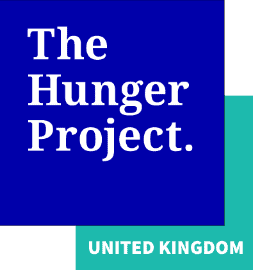World Food Day takes place every year on October 16th in which people all over the world come together and pledge to take actions to eliminate hunger for good. The theme of this year’s World Food Day, “Social Protection and Agriculture: Breaking the Cycle of Rural Poverty,” addresses the social protection strategies that can be applied to agriculture in rural areas. It underscores the reality that agriculture alone cannot sustain the cultivation of food; social protections are critical to the world’s most vulnerable, especially in times of crisis.
About one billion people in developing countries live in extreme poverty. Seventy-eight percent of them live in rural areas, where agriculture is the main driving force of the rural economy and, in some cases, of the whole economy. Enhancing the productivity and incomes of smallholder family farmers is key to progress and the reduction of hunger.
Social protection programs, such as public works projects, can raise farm incomes and boost agricultural productivity. In countries where women have limited access to land, financial services, technologies and labor, social protection programs can make a marked difference, in particular by preventing maternal and child malnutrition. Moreover, it has been repeatedly shown that social protection interventions have a greater impact on education, health and nutritional outcomes when women are directly included.
And, evidence shows that when poor rural households are provided with social assistance, they are better able to manage risks and shocks. When women feel more financially secure, they tend to increase their investments in agricultural assets and engage in more profitable livelihoods—in addition to providing for their families.
The Hunger Project provides these types of social protections. Examples include ensuring communities have access to credit through our Microfinance Program, building essential skills through trainings and workshops, focusing on maternal and child health and education, especially within the first 1,000 days, and empowering women, who are the key drivers in ending hunger and poverty. The Hunger Project also supports ending child marriage in the communities where we work—and ending child marriage is key to breaking the cycle of malnutrition. Watch this video to learn more about how the two are connected.
In addition to social protections, we know that empowering communities to take charge of their own development is to ending hunger. Learn more about how The Hunger Project invests in the leadership of communities and women. When our rural partners have the opportunity to gain leadership skills, they become critical change agents for a sustainable and well-nourished world.
Did you know?
- A third of all deaths in children under the age of five in developing countries are linked to undernutrition. (UNICEF, 2015)
- Evidence indicates that if women had the same access to productive resources as men, they could increase yields on their farms by 20 to 30 percent, raising total agricultural output in developing countries by 2.5 to 4 percent, in turn reducing the number of hungry people in the world by 12 to 17 percent. (FAO, 2011)
- Given the opportunity to generate and control an income, women routinely invest significant portions of their income in food,healthcare and education for their families.
- Around the world, study after study shows that when women are empowered there is increased agricultural production, lower birth rates, lower childhood malnutrition, lower child mortality, more children in school, including girls, and all of society benefits.
- More than 70% of the food insecure population lives in rural areas of Africa, Asia, Latin America and the Near East. Many of them are family farmers, especially smallholders, with poor access to natural resources, policies and technologies. 60% of the world’s hungry are women
- When given equal access to resources and education, women can bring down the number of hungry people worldwide by 16%.
- Despite the fact that women in developing countries provide nearly 70% of the agricultural labor, they continue to account for over 60% of the world’s hungry.
- 50% of hungry people are farming families.
- When women have the same amount of land as men, there is over a 10% increase in crop yields.
- 75% of the world’s poorest people — 1.4 billion women, children, and men — live in rural areas and depend on agriculture and related activities for their livelihood.

